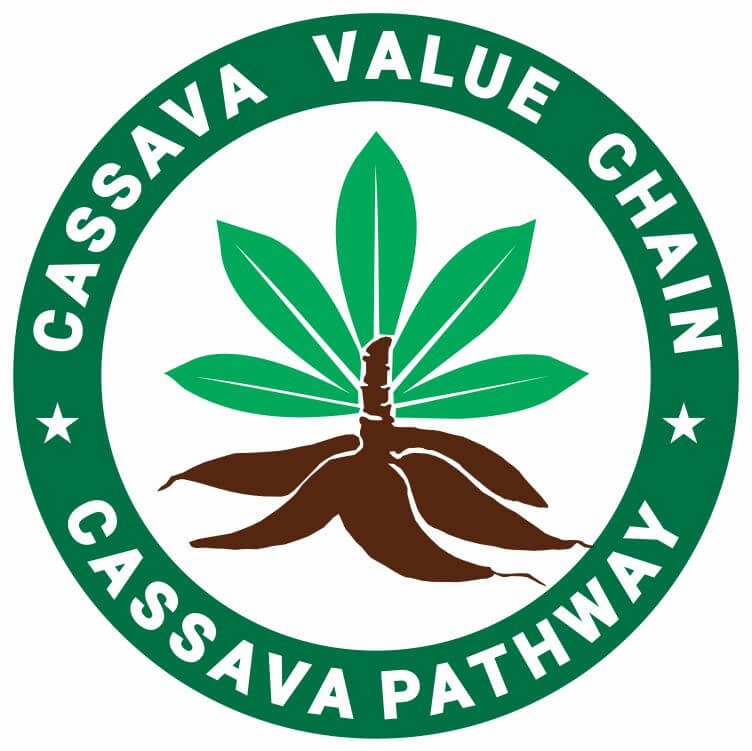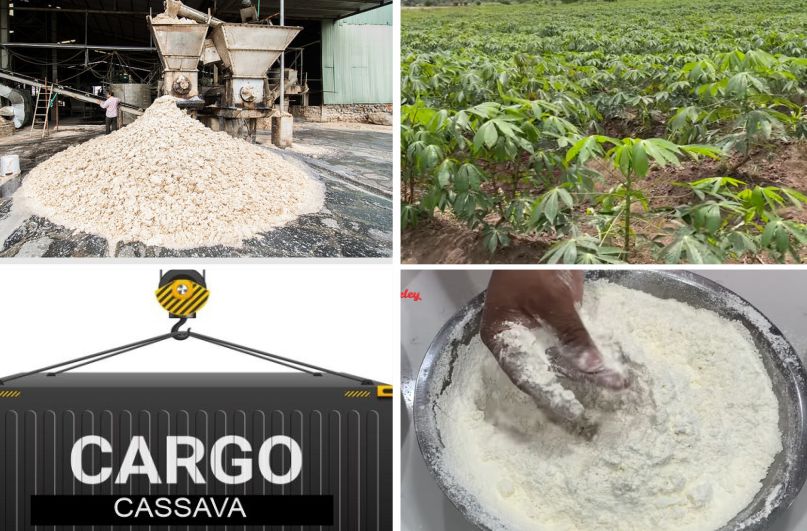Let’s talk about the cassava industry, from farming to global trade. Discover its role in food security, key producers, market challenges, and business opportunities in agribusiness.
Cassava isn’t just a staple food, it’s a powerhouse crop that fuels economies, supports industries, and sustains millions of farmers worldwide.
Whether you’re a grower, investor, or business owner, understanding the cassava industry opens doors to profitable ventures in food processing, biofuels, and manufacturing.
Countries like Nigeria, Thailand, and Brazil dominate production, shaping global supply chains.
But with price fluctuations, processing gaps, and sustainability concerns, challenges remain.
As demand for cassava-based products grows, innovations in farming, technology, and trade are reshaping the industry.
If you want to tap into this thriving sector, knowing its value chain and market potential is key.
Table of Contents
- The Cassava Industry
- Cassava Market and Trade
- Economic Impact of the Cassava Industry
- Challenges and Solutions in the Cassava Industry
- The Future of the Cassava Industry
- Frequently Asked Questions
- Conclusion
The Cassava Industry
The cassava industry is the growing, processing, and selling of cassava and its products. The cassava plant feeds millions and powers industries. You’ll find cassava farms in tropical regions, from small family plots to massive plantations.
After harvest, cassava transforms into flour, starch, biofuels, and even textiles. Farmers, traders, and manufacturers keep the supply chain moving, creating jobs and supporting economies.
Despite hurdles like pests and market shifts, the industry continues to grow with better farming methods and innovative processing techniques.
Let’s take a look:
Cassava Cultivation
The cassava industry heavily relies on specific climatic conditions, requiring temperatures ranging from 25 to 29 degrees Celsius and ample rainfall of about 800 to 1500 mm annually.
These factors contribute significantly to its growth and yield, making the understanding of its cultivation essential for aspiring farmers.
Common Cassava Varieties
There are several common cassava varieties, each with unique traits and uses.
There are also two types of the cassava root: the bitter and sweet cassava.
For instance, the sweet cassava variety is typically consumed directly or processed into various products, while the bitter cassava has a higher cyanogenic glycoside content and is primarily used for industrial purposes, such as tapioca production.
Knowing these distinctions is crucial for farmers to cater to market demands effectively.
Sustainable Farming Practices
Sustainable farming practices are vital for enhancing productivity and ensuring the longevity of the cassava industry.
Techniques such as crop rotation, where cassava is alternated with legumes or other crops, help improve soil fertility and reduce pest populations.
Additionally, incorporating water conservation methods, like mulching and the use of drip irrigation, can greatly enhance crop resilience, particularly in areas facing irregular rainfall patterns due to climate change.
Challenges in the Cassava Industry
Despite its resilience, the cassava industry is not without challenges. Pests such as the cassava green mite and the cassava mealybug pose significant threats to crop health and yield.
Moreover, cassava diseases like cassava mosaic disease (CMD) can devastate crops and harm the economic stability of farmers.
Farmers must be vigilant and adopt integrated pest management strategies to minimize these risks.
The impact of climate change, manifested through erratic weather patterns and prolonged dry seasons, adds another layer of difficulty, underscoring the need for adaptive farming practices in the cassava industry.
Cassava Processing and Value Addition
The cassava industry covers a variety of processing methods that have evolved over time, influenced by cultural practices and advancements in technology.
Traditional Processing Techniques
Traditional processing techniques have been employed for generations, particularly in tropical regions where cassava is a staple food.
These methods often include manual peeling, fermentation, and drying, resulting in products such as garri and fufu.
Garri is a popular West African food made by fermenting and frying cassava, while fufu is a dough-like staple consumed in many parts of Africa.
Both products are not only essential to local diets but also serve as significant contributors to food security and livelihood.
Modern Processing Technologies
Modern processing technologies have emerged to enhance efficiency and production scale within the cassava industry.
Techniques such as mechanized peeling, hydrothermal treatments, and advanced dehydration methods have improved the quality and safety of cassava products.
One prominent derivative of processed cassava is cassava flour, which is increasingly utilized in gluten-free baking and various food formulations.
Cassava starch is another essential product with diverse applications in the food industry, as well as in pharmaceuticals and textiles.
Industrial and Emerging Uses of Cassava
Moreover, the importance of cassava extends beyond human consumption.
The cassava industry plays a key role in animal feed production, offering a nutritious and cost-effective alternative to traditional feed components.
Additionally, cassava is being explored for its potential in bioethanol production, contributing to renewable energy efforts and reducing dependency on fossil fuels.
The ongoing research and development in the cassava sector indicate emerging trends such as the use of cassava in bioplastics and its enzymatic conversion to biofuels.
With growing recognition of its versatility, the cassava industry continues to forge new pathways for sustainable economic development and innovation.
Cassava Market and Trade
The cassava industry plays a crucial role in the agricultural landscape, serving as a significant source of food and income for millions worldwide.
Global Demand and Production
The domestic and international demand for cassava products has seen considerable growth, driven by its flexibility as both a staple food and a raw material for various industries, including food processing, bioenergy, and animal feed.
Major producing countries such as Nigeria, Thailand, and Indonesia continue to dominate the global market, contributing significantly to overall supply.
Trade and Price Trends
In the international trade arena, cassava and its derivatives, such as tapioca and cassava flour, have gained popularity, particularly in markets that prioritise gluten-free alternatives.
While the demand for cassava products is robust, price trends demonstrate notable fluctuations that can impact profitability for producers and traders alike.
The price of cassava is influenced by several factors, including weather conditions, input costs, and market demand.
Additionally, currency exchange rates often play a vital role in determining export profitability, leading to variable price competitiveness between cassava-producing nations.
Economic Impact of the Cassava Industry
The cassava industry plays a vital role in rural economies, particularly in developing regions where agriculture is a primary source of income.
As a widely grown staple crop, cassava supports food security and generates livelihoods for millions, especially smallholder farmers.
These farmers drive local economies by creating jobs in cultivation, harvesting, and processing.
Additionally, large-scale producers contribute to higher yields and export opportunities, leveraging advanced agricultural techniques to boost productivity.
Investments in cassava processing, such as starch, flour, and biofuel production, further stimulate economic growth.
Government policies encouraging investment, infrastructure, and research enhance the industry’s potential.
Overall, cassava is a cornerstone of agricultural development, providing economic stability, employment, and food security in many parts of the world.
Challenges and Solutions in the Cassava Industry
Despite its economic importance, the cassava industry faces several challenges.
Financial barriers limit smallholder farmers’ access to quality inputs, reducing productivity.
Post-harvest losses due to inadequate storage and processing infrastructure further hinder profitability and food security.
Additionally, limited market transparency prevents farmers from making informed selling decisions, leading to income instability.
Solutions include improving financial access through microloans, investing in better post-harvest technologies, and leveraging digital platforms to enhance market connectivity.
Governments and private sectors must collaborate to address these issues through research, infrastructure, and policy support.
By overcoming these challenges, the cassava industry can increase efficiency, enhance farmer incomes, and contribute more effectively to global food security and economic sustainability.
The Future of the Cassava Industry
The future of the cassava industry is being shaped by innovation in biotechnology, digital farming, and sustainability.
Advances in genome editing, such as CRISPR, are improving cassava’s resistance to pests, diseases, and climate stress, ensuring higher yields.
Precision agriculture technologies, including IoT devices and drones, enhance efficiency by optimizing resource use and monitoring crop health in real-time.
Digital platforms improve supply chain transparency, connecting farmers directly with buyers.
Sustainability is also gaining importance, with eco-friendly farming practices, waste reduction, and bioenergy applications positioning cassava as a key player in sustainable agriculture.
By embracing technological advancements and sustainability initiatives, the cassava industry is poised for long-term growth and global relevance.
Frequently Asked Questions
What makes cassava an important global crop?
Cassava is drought-resistant, supports food security, and fuels industries like biofuels, animal feed, and starch-based manufacturing, benefiting millions worldwide.
Which countries are the largest producers of cassava?
Nigeria, Thailand, and Brazil lead cassava production, shaping global supply chains and meeting rising industrial and food demands.
What are the major challenges facing the cassava industry?
Price fluctuations, post-harvest losses, pests, and limited processing infrastructure hinder profitability and industry growth.
How can cassava farmers improve yields and profitability?
Farmers can adopt improved cassava varieties, mechanized farming, sustainable practices, and invest in value-added processing for better market opportunities.
Conclusion
The cassava industry is a major driver of food security, economic development, and innovation.
As a resilient crop, it thrives in challenging environments, making it a crucial staple in many regions.
Beyond its role in food production, cassava supports livelihoods, fuels industrial applications, and presents investment opportunities.
Advances in biotechnology and sustainable practices are transforming the industry, increasing productivity and market potential.
To maximize its impact, collaboration among policymakers, investors, and farmers is essential.
Supporting cassava’s growth through research, infrastructure, and market access will help address global food challenges while fostering economic prosperity.
The cassava industry holds immense promise, and investing in its future is key to sustainable agricultural progress.

Chimeremeze Emeh is a writer and researcher passionate about Africa’s most transformative root crop—cassava. Through his work at cassavavaluechain.com, he explores the entire cassava industry, from cultivation and processing to its diverse applications in food, health, and industrial use.
He also writes for palmoilpalm.com, where he shares his extensive experience and deep-rooted knowledge of palm oil, covering red palm oil, palm kernel oil, and refined products. His work there reflects his lifelong connection to agriculture and his commitment to promoting sustainable value chains in Africa.
Driven by curiosity and purpose, Chimeremeze aims to shed light on how cassava continues to empower communities, strengthen food systems, and link traditional farming wisdom with modern innovation.

